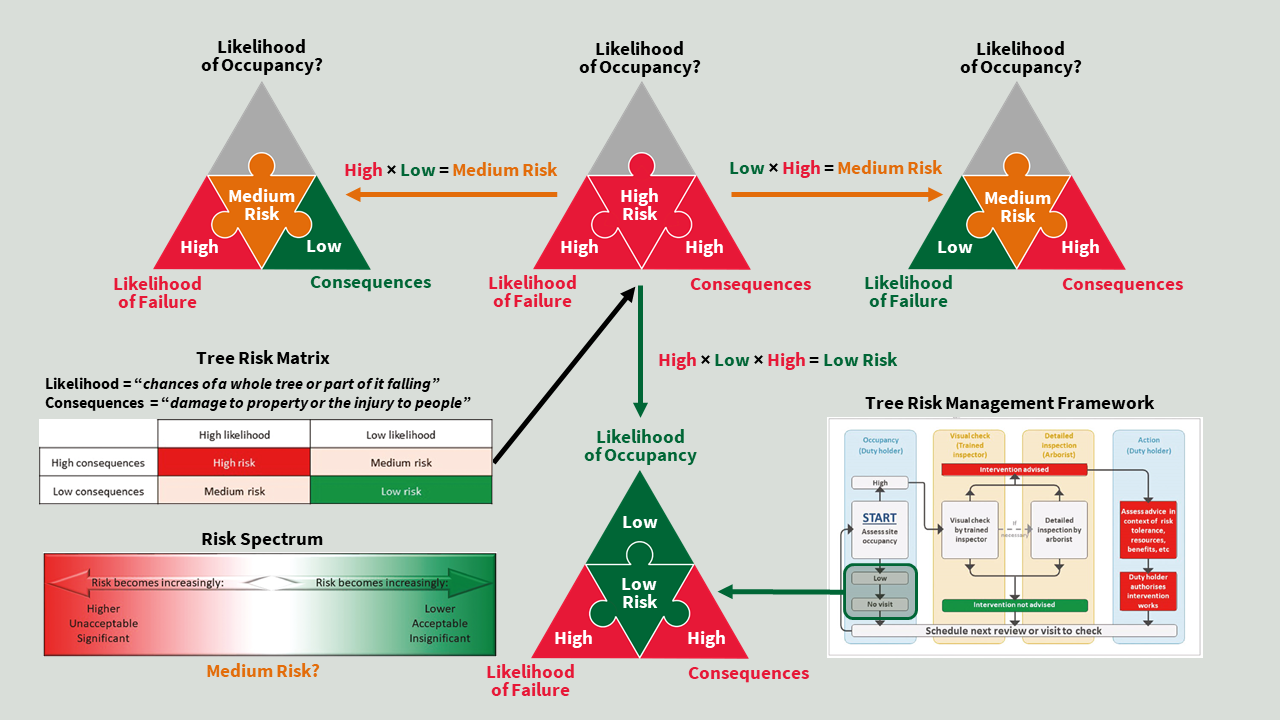 "The implications of recent English legal judgments, inquest verdicts, and ash dieback disease for the defensibility of tree risk management regimes"
"The implications of recent English legal judgments, inquest verdicts, and ash dieback disease for the defensibility of tree risk management regimes"
We've had several requests for a better quality image that's part of a discussion about this article on the UK Tree Care discussion group.
You can download Jeremy Barrell's tree risk management article here.
Since then, we've had further calls to set out the points in this big canvas, with a step-by-step guide to make it easy to follow.
We're genuinely surprised the article has been peer-reviewed, let alone published in a journal.
It's not research. Some obvious key points of fact don't make much sense - even within the questionable logic of its own risk ecosystem. We've sketched them out in the above image so you can see the whole picture, and describe them below. We're baffled how they weren't picked up during the peer review.
Tree Risk Matrix
The article's got a tree risk matrix that
doesn’t include the
likelihood of occupancy.
Likelihood = "
chances of a whole tree or part of it falling"
Consequences = "
damage to property or the injury to people"
The matrix has High Risk, Low Risk, and Medium Risk outputs.

No Likelihood of Occupancy

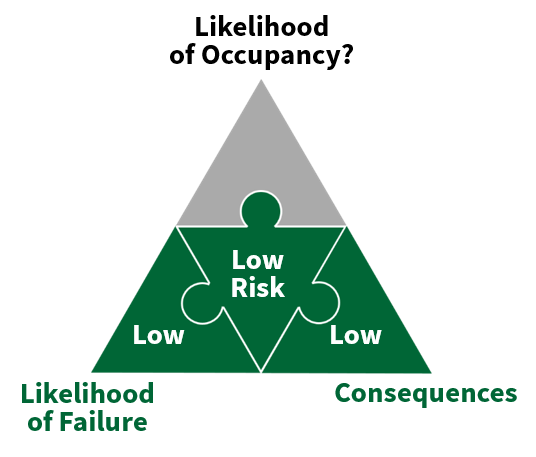
Tree Risk Spectrum
It's got a tree risk spectrum that has NO
Medium Risk.

Tree Risk Management Frameworks
There are two tree risk management frameworks.
Similar to the Tree Risk Spectrum there is NO
Medium Risk
In the frameworks...
Low occupancy means an
Acceptable Risk. No matter how
high the likelihood of failure. Or how
high the consequences.
_Page_15_Image_0001.jpg)
_Page_14_Image_0001.jpg)
So, we've got a Tree Risk Matrix

where...
High × High = High Risk
High × Low = Medium Risk
Low × High = Medium Risk
Low × Low = Low Risk
Yet, in both
Tree Risk Management Frameworks
Low occupancy =
Low/Acceptable Risk
No matter how
high the likelihood of failure or how
high the consequences
High × Low × High = Low/Acceptable Risk
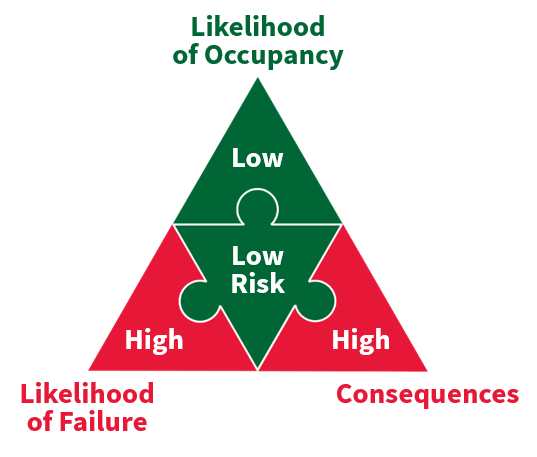
Somehow, we've gone from a Tree Risk Matrix world where:
High × Low = Medium Risk
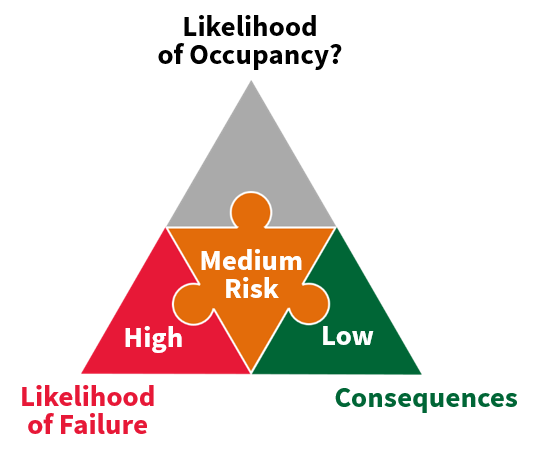
To a
Tree Risk Management Framework world where an additional
High input to a
Medium Risk LOWERS the risk!
High× Low = Medium Risk × High = Low/Acceptable Risk
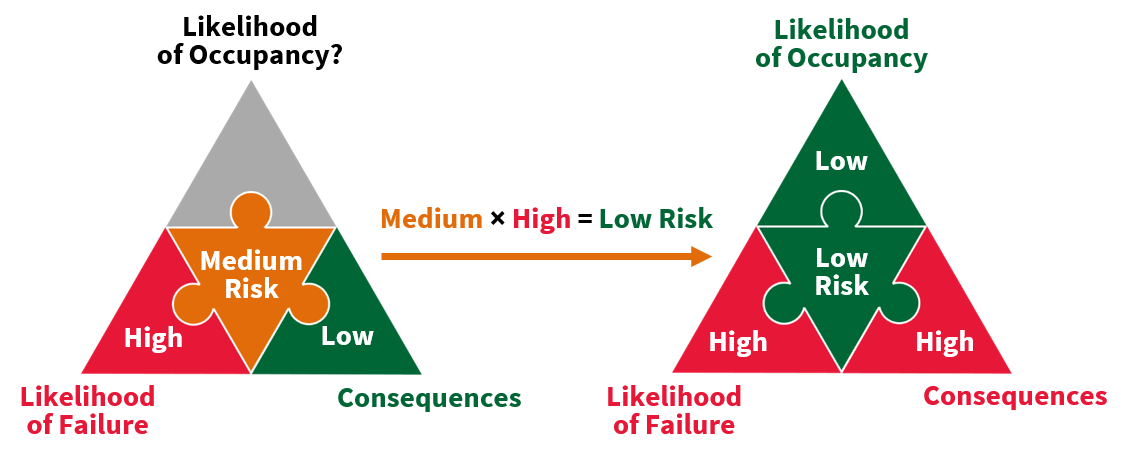
And that's before we consider the really important stuff.
Like what does High, Medium, and Low actually mean? And how do you go about measuring them?
Unless clearly defined, words like High, Medium, and Low are what Philip Tetlock calls 'vague verbiage'. They're illusions of communication. Or tree risk 'bafflegab', as we call it.
Further still, you can't reasonably model tree risk by applying mathematical rules to vague words and then multiplying (or adding) them, or by painting ill-defined words with traffic light colours.
Exploring the low occupancy = acceptable risk statement further.
![]() Low Occupancy = Acceptable Risk?
Low Occupancy = Acceptable Risk?
In Jeremy Barrell's Tree Risk Management Frameworks, he says there's no need to check trees where the occupancy is low. And that it's up to the Duty Holder to decide what
Low Occupancy means.
As we don't know what a Duty Holder will think Low Occupancy means. And there's no guidance about what Low Occupancy means in the article. How do we know the risk is then low enough that it's Acceptable?
No matter how high the likelihood of failure?
Or how high the consequences?
That Low Occupancy has no clear definition or meaning in Jeremy's Tree Risk Management Frameworks should be worrying for a Duty Holder.
In VALID, Low Occupancy is clearly defined and there's no ambiguity. We don't burden the Duty Holder with trying to second guess what we mean by Low Occupancy.
One reason Low Occupancy = Acceptable Risk should be worrying for a Duty Holder following Jeremy's advice is this. In VALID we have several scenarios where Low Occupancy has risks that are Not Acceptable or Not Tolerable.
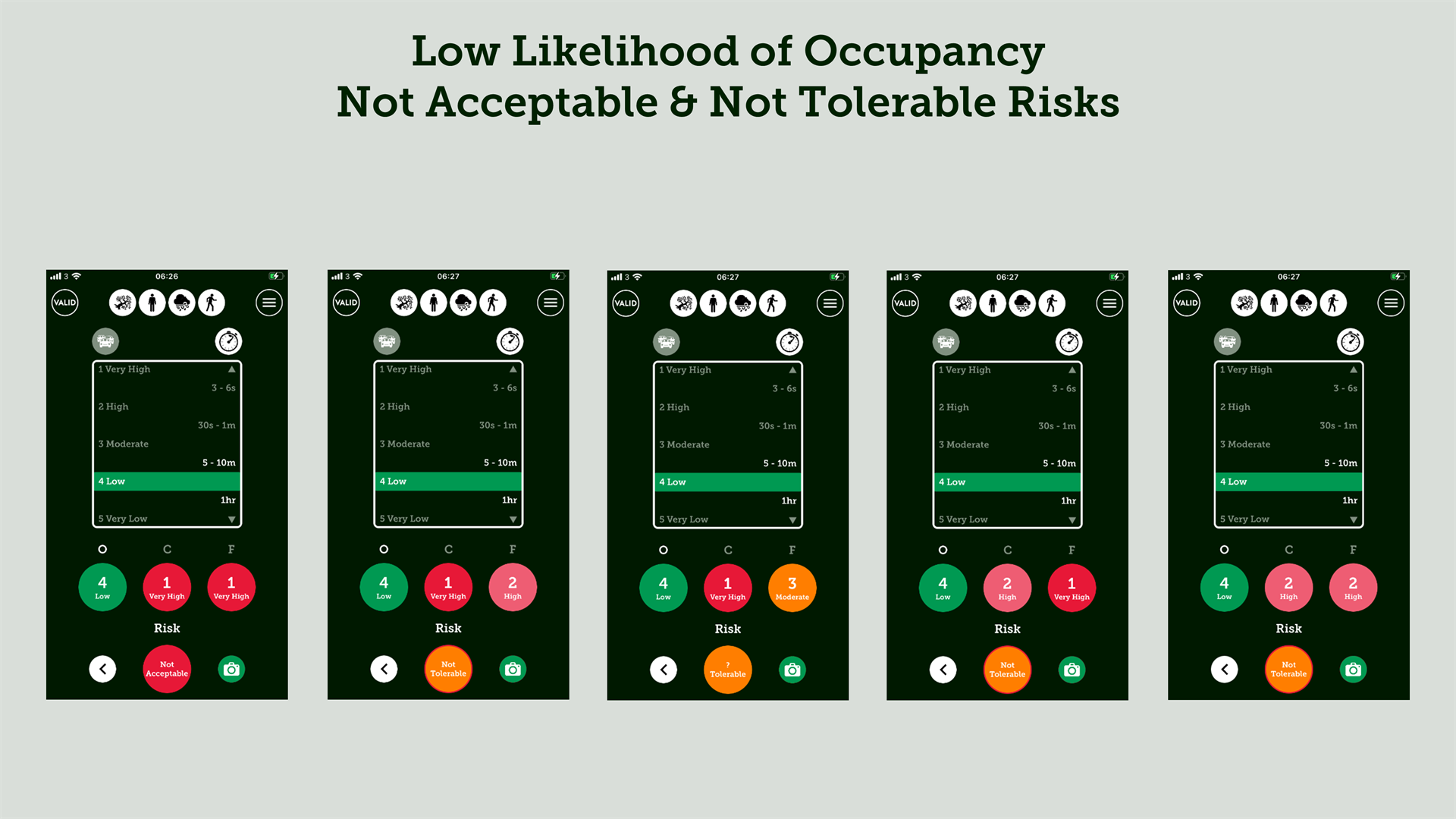
Infrequent or very low use is a higher level of occupancy than low
To make matters worse.
In Jeremy Barrell's 1:10,000 Time Bomb article, he describes this footpath (below) has having infrequent or very low use.
Jeremy says every year the path is walked by a person with a working knowledge of trees who gives them a quick visual check. Because these trees are being checked annually that means in Jeremy's tree risk management vocabulary, infrequent use or very low use is a HIGHER level of occupancy than Low Occupancy - remember, trees in Low Occupancy don't need checking at all.
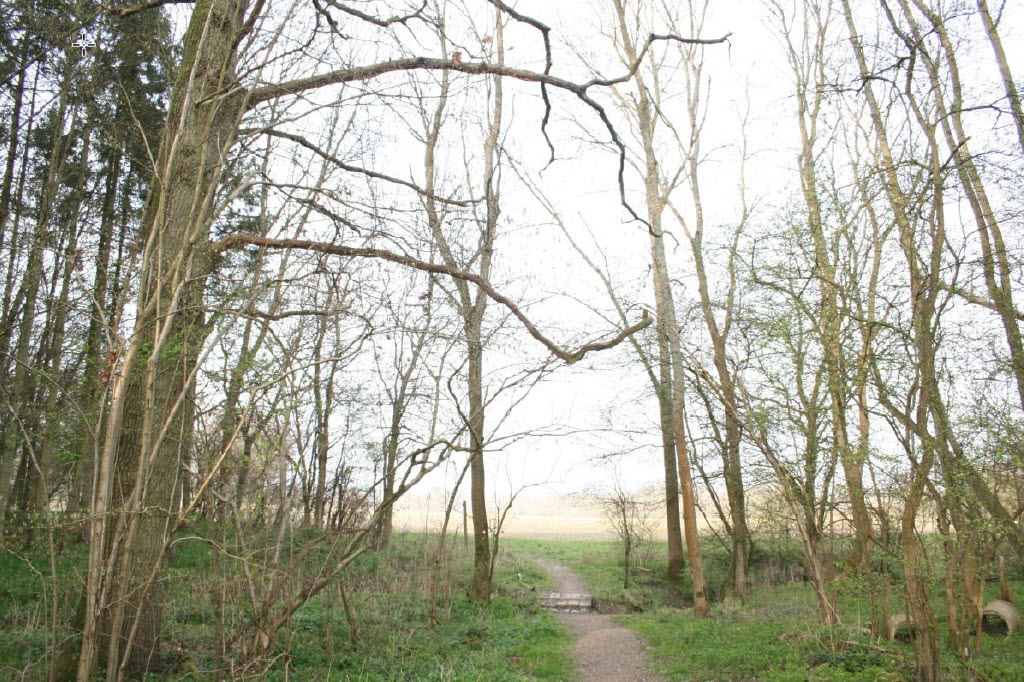
Clearly, any Duty Holders following the guidance in Jeremy Barrell's Tree Risk Management Frameworks could quite reasonably classify the infrequent or very low use of this footpath as Low Occupancy and not check the trees.
This could be a substantial vulnerability for Duty Holders because in his 1:10,000 time bomb presentation. Jeremy makes a case for a claim being made against them if a small diameter deadwood branch from an Ash tree falls and causes significant head injuries to someone walking along this path. Even though he describes the risk as being at the lower end of his risk spectrum, the duty holder is expected to have removed the deadwood because it wouldn't have 'cost much to do it'.
These are just some of the more obvious concerns we have with Jeremy's take on tree risk management in his article.
There are some more insights into the critical problems with a binary take on High v Low Occupancy in the Jeremy Barrell | Tree Risk Management - Likelihood of Occupancy post.

.png)